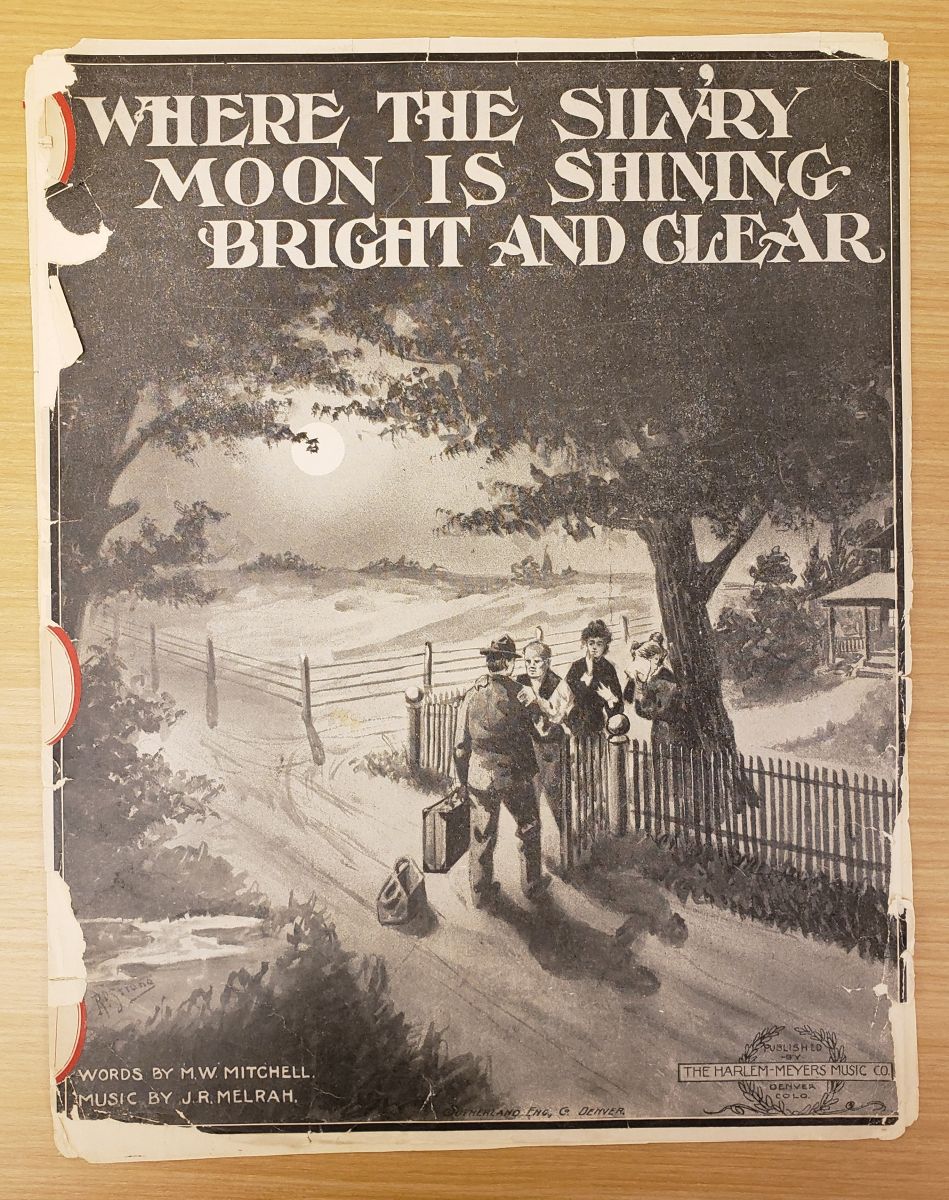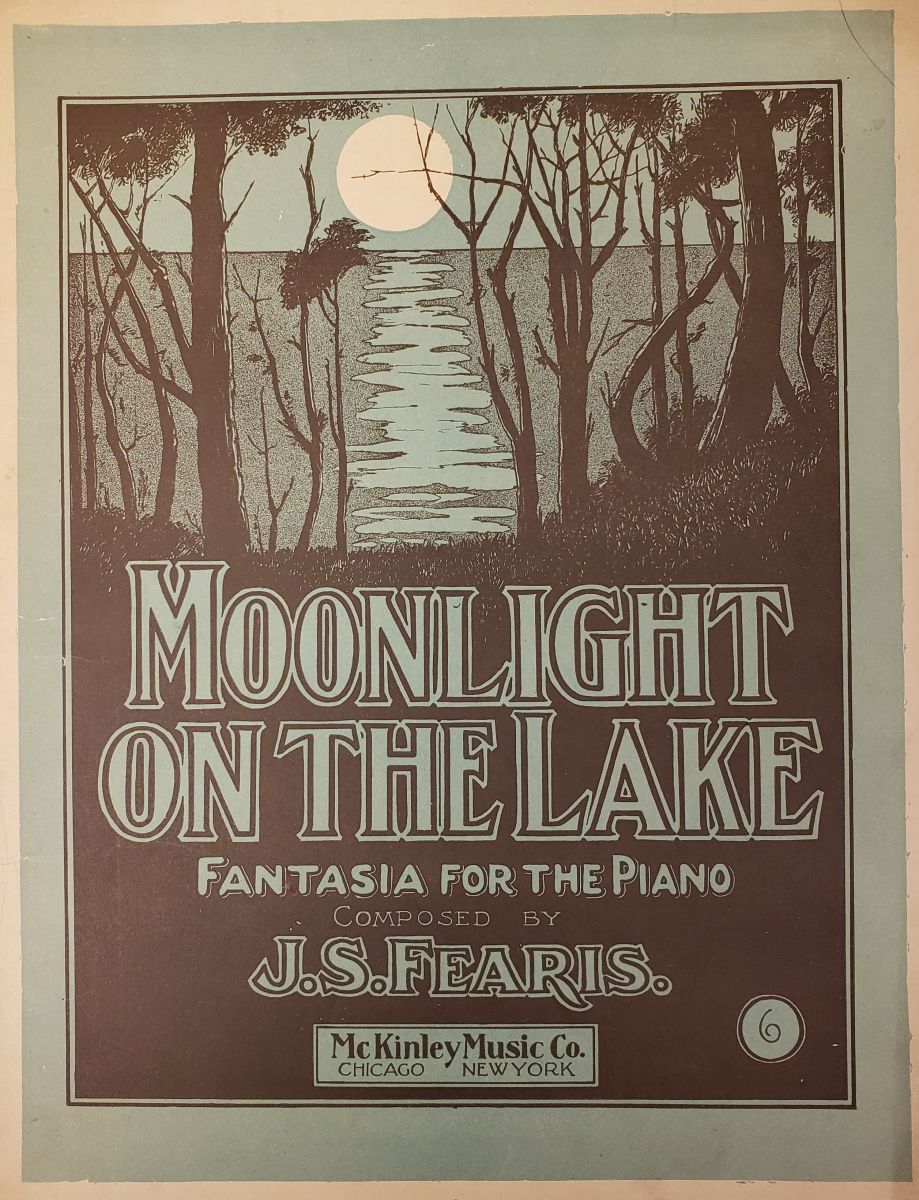"The Silv’ry Moon is Shining Bright and Clear"
Jenna Hersberger, SCRC Graduate Apprentice, shares a behind-the-scenes peek of a recent acquisition she is currently processing. Read on to learn more about the omnipresent moon imagery in the Josephine W. Shinholser Collection of Sheet Music.

The Special Collections Research Center recently acquired the Josephine W. Shinholser Collection of Sheet Music, which contains roughly 400 pieces of sheet music dating from the 1890s to 1997, with most of the songs concentrated between 1900 and the 1940s. Interestingly, almost half of the pieces mention the moon in their titles. While they range from instrumental waltzes and two steps, to fox trots and reveries, most of the songs are lyrical and exemplify nuances in the connection of the moon with romance.
Typically, the moon shines brightly and blesses romantic encounters. In “Moon-Shine” by Edward Montagu and George Hobart, published in 1906, the singer prefers romantic excursions in the moonlight to meetings in the day. “Sunbeams may bring you day dreams, but give me moon-shine and the girl I love.” Sometimes it may be the moon itself that prompts the meetings, such as in “Moonlight Serenade Intermezzo” by James O’Dea (1905), in which the singer pleads with his love to “Come out my love the moon is bright, Come out my love and grace the night…” During these rendezvous, the celestial body may bless people with luck. “Smiling Moon” by Ben Ryan (1910) says, “You’re a dandy moon, You come in awful handy when with Mandy dear I spoon…Just keep on grinning, while I’m winning, my Lady Love…”
Not everyone, however, can be happy in love beneath the moon, and its beams fall upon the laments of the lonely. In “Lonesome Moonlight” by Edward Denish (1910), after describing a failed romance, the singer wonders what the use of moonlight is if he has nobody with whom to share it. Not only might a person have nobody to love, they may be bemoaning the loss of someone, or something they loved. One of the few songs not involving a lover, “Where the Silv’ry Moon is Shining Bright and Clear” by M.W. Mitchell (1904), describes the loss of a place. The main character left home under the light of the silvery moon with the turtledoves cooing. He promised to come back, but when he did, the old farm was gone. He now equates the turtledoves and the moon with his romanticized past. More often, however, songs equate the loss of a person with the moon. “Farewell Mr. Moon” by Arthur Behim (1908) describes how the moonlight signified the love that the singer and his lover shared one evening. When the moonlight disappeared, so did the couple’s romance.

For these lonely people, the moon may console and participate in the conversation. In “Fairy Moon” by Chas. K. Harris (1911) the singer questions the moon whether her lover will be coming to see her that night. She implores the celestial body to make the man hurry because she is excited to see him. Nevertheless, the cloud in front of the moon implies that her lover has abandoned her for someone else. One step beyond that, the man disappointed in love in “I Love You Mister Moon” by John Knight (1912) talks of meeting the moon as if it is a lover, meant to console him after his terrible loss.
In these early twentieth-century songs, the moon has connections with love, happiness, and kindness. It may remind someone of tragedies and lost romance, but overall, it has positive connotations as it lights the meetings of couples, gives them good luck, and consoles lonely and lost lovers.
Please note that the materials referenced here are unprocessed and not yet readily available to researchers. If you are interested in viewing these materials, please contact the Special Collections Research Center at spcoll@wm.edu.
More to Explore:
Other popular sheet music collections in the Special Collections Research Center include the Bound Music Collection (Mss. 1.12), the Addie Rogers Bound Sheet Music Collection (Mss. Acc. 2007.48), and the Ruffin-Pollard Bound Music Volume (MS 00172). Clicking the title of these collections redirects to the respective collection's finding aid in the SCRC Manuscripts and Archives Database.

